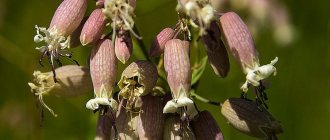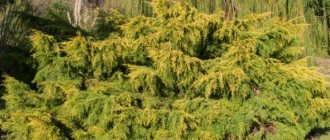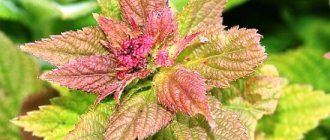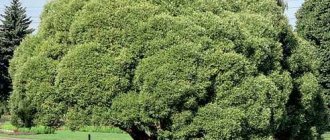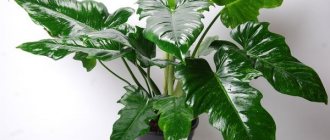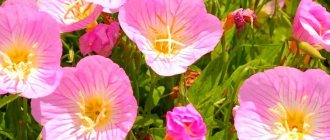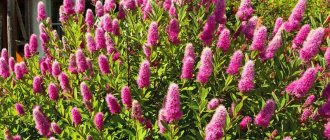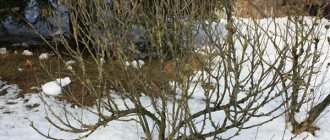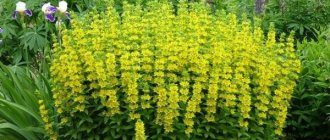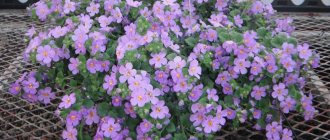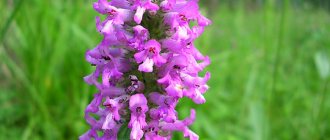Description
Cherry laurel (Prunus laurocerasus) is a perennial green plant in the form of a bush or tree (depending on the type and location of growth), which grows up to 10 meters. The leaves are dark green, oblong in shape, from 5 to 20 centimeters, the lower part is matte in color. There is no seasonal shedding of leaves; they are renewed gradually and live up to 2 years.
The plant blooms in late April-early May with white five-leaf buds and many stamens. Flowers grow in racemes up to 20 centimeters long. The shrub does not bloom for the first four years of its life.
In different regions, the shrub begins to bear fruit at different periods of summer. The yield from each bush is up to 100 kilograms. The berries of different varieties have different colors, the structure is fleshy, the taste is sugary-sweet, with sourness, the wild varieties are bitter and astringent. The seeds of the berries contain hydrocyanic acid, which is poisonous, so eating them is prohibited.
In Russia it grows on the shores of the Black Sea in the Caucasus and Crimea.
In other parts of the world:
- in Iran;
- in Asia Minor;
- on the Balkan Peninsula;
- in China;
- in Japan;
- in the Himalayas;
- in Mexico;
- in Bolivia;
- in Brazil.
The plant loves warm and temperate regions with sandy loam and calcareous soil. Cherry laurel survives if it gets cold down to -20°C.
How to distinguish between laurel and cherry laurel: both shrubs in the photo
Almost all gardeners know that cherry laurel is very similar to laurel and sometimes it can be very difficult to distinguish them from each other. Let's find out exactly how to do this, because the difference between these plants is quite large, this can be seen even in the photo where both of these shrubs are shown. Before you distinguish between laurel and cherry laurel, look at the photo:
On the left is a laurel bush, on the right is a cherry laurel bush.
First of all, pay attention to the fact that cherry laurel leaves are larger in size than the relatively small laurel leaves. Usually, the former can reach 20 centimeters, while the latter are no more than 10 and have an oval shape. At the same time, laurel leaves have the same leaf on both sides, when, like cherry laurel, it is glossy on the top. Also, you should definitely know that laurel can be used as a spice; cherry laurel contains a lot of toxic substances that can lead to severe forms of poisoning if consumed in the wrong form.
On the left is laurel, on the right is cherry laurel
On the left are laurel leaves, on the right are cherry laurel leaves
Also, cherry laurel is quite different from laurel during flowering. Its inflorescences are collected in large luxurious brushes that have white flowers. In laurel they are collected in the axils of the leaves and cannot please the eye with large bouquets.
Laurel blossoms above, cherry laurel blossoms below
The most important difference between trees is their fruits. In cherry laurel they are edible, have a pleasant sweetish or bitter taste and can be consumed immediately after being picked from the tree. At the same time, they are even similar in color to cherry fruits - they are red or burgundy, while laurel fruits are not edible and have a black or blue tint.
Laurel fruits
Cherry laurel fruits
It is quite difficult to make a mistake if you compare the leaves of laurel and cherry laurel in dry form. They are not difficult to distinguish not only by their shape, but also by the specific smell that comes from bay leaves. By the way, they may seem stiffer to the touch.
Kinds
There are hundreds of species of cherry laurel in nature. The varieties differ from each other in crown, height and shape of the bush, and color of the fruit.
Popular types:
- Rotundifolia, a medium-sized shrub, loves full sun, can grow on rocky soils, bears black berries;
- Herbergery, a spherical shrub, reaches sizes up to 3 meters in diameter, the variety loves warm and hot places, the fruits are burgundy in color;
- Mount Vernon, a small shrub, used in landscape design, unpretentious in light and temperature, does not bear fruit;
- Caucasian, differs from other varieties in its elongated leaf shape;
- Shipkensis, a specially bred variety for growing in containers;
- Portuguese, medium-sized tree, dense crown, deep burgundy fruits;
- Lusitanian, a tall shrub with a dense crown that is difficult to care for;
- Medicinal, the most unpretentious variety, can grow as a medium shrub or a small compact ornamental tree, used for landscape design, medicines are prepared from the leaves;
- Otto Luyken, a small spherical shrub, unpretentious to light and temperature.
Cherry laurel lusitana
It is a large shrub; with proper care it can reach 5 meters in diameter. Prefers well-drained soils without excess moisture. During dry periods it grows more slowly. A very heat-loving variety, it overwinters exclusively under covering material.
It is well suited for shaping by cutting, which is why we love it among landscape design specialists.
The flowers open in racemes up to 25 centimeters long and have a distinct, fragrant, cold aroma, reminiscent of bird cherry. Fruits with dark burgundy or purple berries.
Portuguese cherry laurel
It is a large bush or medium-sized tree. In the wild it does not exceed 10 meters in height. Features include sharply shaped leaves with red-brown petioles. Young branches are angular in shape, red-brown in color. The plant bears fruit with dark red or dark purple berries. The taste of the fruit is sour, with bitterness. Portuguese cherry laurel typically blooms late at the end of June.
What cherry laurel looks like: description of types and varieties
There are more than 400 species of this vegetation all over the world. However, not all specimens are suitable for germination at home. There are three most suitable varieties:
Portuguese.
Medicinal.
Lusitanian.
Below is a brief description and photo of each type of cherry laurel.
The Portuguese variety is presented in the form of a small tree covered with miniature oval-pointed leaves with burgundy petioles. A characteristic feature is the plant’s slow growth and late flowering - in the last days of June. The fruits are juicy berries, colored purple and black.
Cherry laurel (L. officinalis) is grown indoors. This is not only the most popular variety in home plant growing, but also the most unpretentious, frost-resistant and fast-growing vegetation of this genus. The leaves of medicinal cherry laurel have medicinal properties, therefore they are widely used in folk medicine for the production of tinctures and cherry laurel water. Such drugs have an analgesic and sedative effect and help with diseases of the gastrointestinal tract. Due to the delicate aroma of flowers, they are used to prepare a natural flavored medicinal supplement.
Lusitanian cherry laurel is the most heat-loving among all plant varieties. With proper care it reaches large sizes. It lends itself well to shaping by trimming, which is why it is often used for decorating rooms.
Among the varieties of cherry laurel plants, the most common are:
Shipkensis. Round-leaved.
Otto Luyken.Caucasian.
Each of the above instances has its own characteristics. A brief description of cherry laurel varieties and their corresponding photos are provided below:
Cherry laurel Shipkensis is distinguished by its narrow leaf shape and abundant flowering. The round-leaved bush has rounded leaves with a glossy surface and a light green color.
Otto Luyken is considered one of the hardiest varieties. It has small overall dimensions, a large number of miniature shiny leaves and quite abundant flowering from mid-June.
Caucasian cherry laurel is distinguished by large elongated leaf blades and a bright green color.
You can take a look at what a cherry laurel bush looks like in the photo below:
Reproduction methods
Cherry laurel is propagated in several ways: cuttings, seeds and layering. Each option has its own nuances and features.
Bones
Planting material for propagation is suitable when fully matured. During the preparation stage, the stone is left in a cool and damp place for several months.
Stages of propagation through seed:
- After a cool place, planting materials are placed in a warm place for 3 days.
- Plant the seed in a container with soil, adding peat.
- The sprouts are cared for until they are strengthened for up to a year.
- You can transfer the bush to your garden plot after a year; it is better to first plant it in a shkolka (a mini-garden for spreading seedlings, where the growing of plants takes place).
When propagated by stones, the tree does not grow to its size, remains stunted, and may not retain its species characteristics.
Cuttings
The most successful way to propagate cherry laurel. Cuttings are labor-intensive, but more effective than propagation by seeds, because they preserve species characteristics. With this type of propagation, the tree completely adopts the species characteristics (height of an adult plant, crown shape).
Propagation by cuttings is carried out in several stages:
- In mid-summer, young cuttings of a two-year-old plant are pruned.
- Leaves are removed from the branches.
- Each branch is cut into pieces of 10 centimeters with pruning shears, so that at least 2 buds remain on each.
- The shoots are deepened 3 centimeters into the nutrient soil, having previously made drainage at the bottom of the bowl.
- The twigs in pots are placed in a greenhouse with a temperature of at least 24°C.
- Watering is carried out 1 to 3 times a day, maintaining sufficient moisture.
- When the root system is formed, the sprouts can be planted in separate pots.
- Grown plants are kept in pots for 1 year.
- The seedlings are planted outdoors in the fall of next year.
IMPORTANT You cannot trim more than 30% of the branches.
By layering
For this method of propagation, there are 3 types of raw materials: arcuate, vertical, horizontal. As a soil for propagation, flower soil or universal soil with a reaction from slightly acidic to alkaline is used.
For the arcuate method, the branches are tilted towards the ground and covered with soil. Until the development of a full-fledged root system, the layering is provided with regular watering. When the root system is well formed, the shoot is transplanted to the intended place or left with the mother tree. For the winter, the young sprout is provided with shelter.
Vertical propagation:
- In the autumn, all branches of the bush are cut off, leaving stumps of 3 centimeters.
- Fertilize and provide shelter for the winter.
- In spring, thinning is carried out, keeping them strong and strong.
- After reaching a height of 20 centimeters, the shoots are sprinkled with soil and watered regularly.
- In autumn, young shrubs are divided and planted in their designated places.
The easiest method of propagation is horizontal. The branches of the bush are covered with soil along the entire length. The next year after wintering, young shoots are separated from the old bush.
Harm and contraindications
The plant contains a large amount of hydrocyanic acid, which is also considered a poisonous element that should be paid attention to and protect yourself from.
Contraindicated for use by pregnant women, nursing mothers and children.
Plant propagation
There are 3 methods of reproduction:
Let us examine in detail the seed propagation method.
Seed method
The main rule of seeds is that their productivity is developed only in fresh form, immediately after collection. If you are planning to put off the seeds for later, they may not sprout. The only salvation will be a damp, cool environment. How to do it:
- Method of propagation by cuttings
This process is quite difficult, unlike the seed propagation method. Let's look at it in detail:- We divide and cut the woody shoots and divide them into parts;
Prepare a mixture: peat-humus-sand. There should be expanded clay at the bottom. We plant shoots there;
- We put our container with mixtures and shoots in the greenhouse;
- We water it often in hot weather (it loves water very much);
- When the root system has matured, transplant the finished sprouts into special pots and they will sprout there alone for a year;
After a year, plant in open ground.
Method of propagation by layering
Vertical layers. How to do everything effectively:
- We make stumps from trees;
- From March to May shoots will sprout on the stumps. We will remove some of them, but keep the strong ones;
- When the shoots grow up to 20 cm in height, they are enriched with soil and abundant watering;
- From September to November, the sprouted shoots are planted in another place.
Any soil can be used: alkaline, slightly acidic.
Landing
The plant is planted both in open ground and on balconies and terraces. Based on the variety, soil acidity, drainage and planting depth are observed.
It is recommended to move the shrub from home to a permanent location in early spring or October. For planting, places protected from drafts are preferable.
The holes are prepared in April, mineral or organic fertilizers and peat are added. After planting, the seedlings are watered moderately.
You can choose a place that is either sunny or shady.
How to propagate a plant
We recommend reading our other articles
- Why do broilers fall on their feet?
- Apricot variety Pineapple
- Master Gray chickens
- The best apricot jam recipes
Cherry laurel can be propagated using a variety of methods.
- Seed propagation. To do this, the seeds are first hardened at +4...+6 degrees for 60 days, then soaked in hot water for one day. Planting is carried out in a mixture of peat and garden soil. The seeds germinate quite quickly. Young sprouts are kept in room conditions for up to a year. After this, you can transplant them to the site.
- Cuttings are the simplest propagation option. To do this, woody shoots are cut, cleaned of leaves and planted in boxes with a mixture of peat, earth and humus. They are grown in greenhouse conditions for up to a year, then transplanted.
Important!
It is when cuttings that it is easiest to preserve the varietal characteristics of a crop!
Photo of Portuguese laurel cherry
- Air layering can produce several new plants. To do this, in the spring, a certain branch is selected, cut (to allow the root to emerge), bent down and covered with earth. Around the end of August, it will be possible to cut off the young culture from the mother one, and replant it the following year.
- Cherry laurel can also be propagated by root shoots. Old trees are usually not uprooted, but cut off, leaving a stump up to 5 cm in height. Next year it will produce young shoots. When they reach 30 cm, they begin to be watered and hilled. Over time, the shoots will acquire their own roots, and they can be removed from the ground and transplanted to a permanent place.
Care
The shrubs are fed from April to September with mineral or organic fertilizers, watering abundantly. Fertilizer is calculated as follows: 5 kilograms per square meter or according to the instructions for the fertilizer. You can also feed with a solution of manure and rotted compost.
IMPORTANT Nitrogen fertilizers are used in moderation; if there is an excess of it, the tree will have a hard time withstanding the cold.
Secateurs are used to trim leaves and shape shrubs; scissors cause leaves to turn yellow.
Recommended periods for pruning:
- in February the leaves are cut off;
- if the bush is used as a living fence, molding is carried out at any time of the summer season;
- in September and May, use pruning shears to trim off excess branches and diseased parts.
It is recommended to water the tree once a week in summer, and 2 times every 7 days on hot days. One tree needs 10 liters of water at a time. In winter, watering is reduced to once a month. Cherry laurel that grows at home needs to be watered weekly. On dry and hot days, watering is supplemented by spraying the crown with water.
In winter, watering the tree is stopped, the roots are insulated with peat or agrofibre. In severe frosts, the crown is covered with insulating material.
Cherry laurel loves loose soil, so it is recommended to weed holes around the roots, removing weeds.
IMPORTANT Excessive watering should be avoided, as this can lead to rotting of the roots and death of the entire bush.
Diseases, pests and ways to combat them
Due to the toxic substances contained in parts of the tree, insects rarely grow on it. The most common disease of cherry laurel is powdery mildew, which appears due to excess moisture due to excessive watering.
When white spots of powdery mildew appear, the tree is treated with soap solutions or sulfur-based products.
Popular and effective folk remedy:
- For 4 liters of water, take 1 tablespoon of baking soda and 1 teaspoon of liquid soap.
- Stir the ingredients thoroughly until they are completely dissolved.
- Treat all parts of the tree with the resulting mixture every 3 days until the disease disappears.
A quick and lasting effect is obtained by treating with a solution of 8 liters of water with 2 liters of whey. Spray three times with an interval of 3 days.
If scale insects or mealyworms are infested on the leaves, insecticides are sprayed on the cherry laurel tree and the soil around it: Aktar, Fufanon. Leaves damaged by pests must be removed.
Rarely, trees can be affected by aphids. Folk remedies and insecticides are used to control pests.
Folk recipe for aphids:
- Dissolve 100 grams of ash and 50 grams of laundry soap in 1 bucket of water.
- Leave for 2 days.
- Strain the resulting mixture.
- Spray the trunk, branches and leaves.
With this method you can get rid of aphids and eliminate the invasion of ants that carry them.
Recipe for all insects:
- Pour half a bucket of dried marigold flowers from last year with the same amount of hot water.
- Leave for 1 day.
- Strain the solution.
- Spray all parts of the tree.
Possible harm and contraindications
All parts of the plant, except the berries, are considered poisonous. They contain amygdalin and hydrocyanic acid. This is mentioned not only in scientific, but also in fiction. For example, the poison that was used to poison Romeo in Shakespeare’s tragedy was made from hydrocyanic acid, which is part of cherry laurel.
Note: amygdalin is contained in varying concentrations in the seeds and leaves of all representatives of the Rosaceae family.
Amygdalin is a poisonous compound. When it enters the human body, it turns into hydrocyanic acid. In large quantities it leads to oxygen starvation of tissues. This negatively affects the condition of all internal organs and systems:
- due to lack of oxygen, the functioning of the nervous system is disrupted;
- the frequency and depth of breathing increases, shortness of breath appears, with severe intoxication, breathing is suppressed until it stops completely;
- the heart rate slows down, blood pressure rises, acute heart failure develops, cardiac arrest is possible;
- under-oxidized products, lactic acid, acetone bodies accumulate in the blood;
- metabolism is disrupted.
Contraindications to the use of cherry laurel fruits and medicines made from the plant:
- pregnancy;
- lactation period;
- childhood;
- individual intolerance;
- allergy;
- the presence of chronic diseases in the acute stage.
The benefits and harms of cherry laurel will differ in each specific case. If there are contraindications, it is prohibited to use it. It is better to consult a doctor before use.
How to grow and care at home
Dwarf species and young seedlings grow well both at home and on the balcony. Recommended temperature 20-24°C. In summer and warm spring, containers are moved to the balcony or garden.
IMPORTANT The shrub should be protected from bright direct sunlight, as it can burn the leaves.
Planting a young plant in a home container:
- Place drainage at the bottom of the planting container (expanded clay, stones, sand, which allows water to pass through well).
- A mixture of leaf soil, mullein and humus in equal proportions is used as a substrate.
- After planting, water moderately.
In warm weather, the bush is watered once every 7 days, in winter once every 14 days. It is necessary to fertilize monthly in the form of mineral and organic fertilizers.
Beneficial features
Cherry laurel leaves contain a large amount of biologically active substances, vitamins and essential oils. Among its healing properties, its anti-inflammatory and soothing properties are especially valued.
How to use the bush:
- for making pillows from stems and leaves to improve sleep quality and reduce headaches;
- for imparting almond flavor to dairy products in industry;
- as a natural herbal remedy for the preparation of medicines and home medicine;
- for cosmetic purposes to improve hair quality and accelerate hair growth.
Application in medicine
The high content of organic substances in the leaves makes them indispensable in the treatment of many diseases. Cherry laurel water is prepared from medicinal (ordinary) cherry laurel. Raw materials for tinctures, drinks and water are collected in July-August.
Cherry laurel
This variety is a small shrub or tree no more than 3 meters in height. Medicinal cherry laurel is resistant to frost and shady places and brings a rich harvest. The soil it prefers is calcareous soil and loam. Medicinal cherry laurel is often used in landscape design due to its flexibility in shaping. It blooms profusely, emitting a rich aroma similar to the smell of bird cherry.
Included in the homeopathic remedy Laurocerasus. Cosmetics for facial skin are made from the flowers of the tree. Cherry laurel flower water hydrolate, which is used as the basis of facial solutions, relieves inflammation, treats irritation and acne, and tightens the skin.
Chemical composition
The leaves contain the most active substances. They are used in homemade beauty recipes and as the basis of medicinal drinks.
Chemical composition of medicinal cherry laurel leaves:
- esters;
- hydrocyanic acid;
- stigmasterol;
- beta-sitosterol;
- flavonoids;
- fats;
- wax;
- tannins;
- amygdalin;
- vitamin C;
- catechins;
- acids.
Beneficial properties of cherry laurel
Due to its rich composition, the leaves are used in folk medicine to treat various diseases. Tinctures and cherry laurel water are made from them.
Remedies made from medicinal cherry laurel leaves have the following properties:
- kill bacteria, helminths and viruses;
- relieve inflammation;
- calm down;
- relieve spasms and pain;
- dulls the excitability of the laryngeal mucosa;
- eliminate irritation of the mucous membranes of the gastrointestinal tract;
- relieve cough.
Due to their wide spectrum of action, leaf-based products are used to treat the following diseases:
- headache;
- insomnia;
- depression;
- gastritis;
- peptic ulcer of the stomach and duodenum;
- tuberculosis;
- skin diseases (scrofula);
- helminth damage;
- cough due to respiratory diseases;
- irritability;
- epilepsy;
- uterine bleeding;
- haemorrhoids;
- inflammatory eye diseases;
- cancer of the cervix, ovaries (as an adjuvant);
- arrhythmia.
ATTENTION You can only take products based on cherry laurel leaves in consultation with your doctor. The drug is potent and can cause severe side effects in the form of sudden surges in blood pressure, nausea, vomiting, and allergies. Pregnant and lactating women are prohibited from taking such medications.
Forms of application and recipes
For stomach pain, cramps and gastritis, make an infusion of fresh leaves. Pour 1 tablespoon of raw material into a glass of boiling water and let it brew for 20 minutes. Drink 1 tablespoon to relieve pain.
By distillation with water, cherry laurel water is obtained, which is used both internally and in the form of lotions and inhalations.
The berries are used to prepare jams, tinctures, wines and tonic drinks. Due to their high ester content, the leaves are used as flavoring agents for dairy products.
Homemade recipe for a side dish or a separate dish of pickled laurel:
- Sort out 0.5 kilograms of berries.
- Rinse under running water and leave to drain in a colander.
- Finely chop the lemon peel.
- Boil syrup from 1 teaspoon of lemon peels with 150 grams of sugar.
- Place the prepared fruits in sterilized jars and fill with cooled syrup.
- Add a couple of pinches of salt.
- Place a weight on top of the jar so that the berries are completely covered with syrup.
- Seal the jars loosely and leave for 4 days at room temperature.
- When the solution in the berries turns pink, transfer the container to the refrigerator to stop fermentation.
A mixture of essential drops of cherry laurel, laurel, eucalyptus and myrtle is applied to the inside of the pillow and used to improve sleep. For severe headaches, it is recommended to rest on such a pillow for 3-5 hours. The second option for making a pillow is to place cherry laurel, eucalyptus and noble laurel leaves inside the pillowcase.
I use a strong infusion of fresh leaves to make a lotion for boils and rub it into the scalp for baldness.
Contraindications
Due to the content of hydrocyanic acid, which is a toxic substance, not everyone can use cherry laurel-based products. When taking it, you must remember the dosage and contraindications; in some cases, taking such drugs can be fatal.
You should not take the medicine in the following cases:
- pregnancy;
- breastfeeding period;
- children under 16 years of age;
- individual intolerance.
Cherry laurel: planting, propagation, cultivation and care
Cherry laurel is a medicinal, evergreen shrub, the fruits of which are very popular in folk medicine, cooking, and winemaking. It is used as an ornamental, industrial and fruit crop to produce tasty, healthy berries and healing essential oils. Why else is cherry laurel valuable? Let’s find out.
Cherry laurel is an evergreen plant of the Rozanov family, whose homeland is considered to be the Western Caucasus. Under natural conditions, it can be found in many European and Asian countries, where a warm and temperate climate prevails.
The shrub got its name due to its fruits, which are similar in appearance to cherries, and the shape of the leaves, which resemble laurel leaves.
Cherry laurel is a perennial, reaching a height of up to 10 m. It has a long, strong root system, is distinguished by green, smooth, slightly pubescent branches, on which are located dark green leaves of a dense, leathery structure.
In April-May, the bush, which has reached four years of life, begins to bloom. It bears whitish flowers with racemes up to 20 cm long, which in appearance resemble decorative candles. Each flower, which produces a stunning aroma, consists of a calyx, a corolla with five petals and a large number of stamens. After flowering, the tree bears small, fleshy fruits - drupes of red, white or pink flowers, depending on the variety. The fruits have a pleasant, sweet-sour, tart taste, but the seeds, leaves and bark of the crop are poisonous. The yield of one plant can be up to 120 kg.
There are over 400 species of cherry laurel in nature, but among them only three have become most widespread:
- Portuguese - a rather large shrub or a small tree, the peculiarity of which is considered to be very beautiful, pointed ovoid leaves with red petioles. The tree grows slowly and blooms late - at the end of July. The fruits of the plant are small dark red berries, which during flowering give the crop an elegant, rich appearance;
- Lusitanian is a powerful shrub that can reach a height of up to 5 m. The variety grows very slowly, especially on poorly moistened soils, although it can die if there is excess moisture. The plant is a heat-loving species, so it overwinters only if there is shelter. The peculiarity of cherry laurel is that it can ideally tolerate shaping by pruning in open ground and in tub plantings;
- medicinal - the most famous type, which is widely used in the field of modern and traditional medicine. It is a small shrub or tree, no more than 3 meters high. It is characterized by high resistance to frost, shade tolerance, rapid growth, and productivity. It is sensitive to soil, loves calcareous, humus-carbonate soil, and loam. The plant is highly decorative, especially during the flowering period. It lends itself well to shaping and is often used in landscape design of plots, gardens, and parks. The fruits of the crop are distinguished by their rich vitamin and mineral composition, thanks to which they are widely used for medicinal purposes.
In landscape design
Cherry laurel has decorative qualities and is therefore actively used in landscape design. Wood lends itself well to shaping. The most popular and beautiful shapes are pyramidal and ball. It is easy to form various shapes from shrubs that hold their shape for a long time.
The shrub is smoke and gas resistant, durable (up to 70 years), therefore it is widely used for landscaping in urban gardens as decoration, hedges or strengthening of cliffs. Often used to create decorative groups of evergreen shrubs and trees.
Dwarf varieties are used to decorate flower beds or borders, combined with coniferous crops. Shrubs planted closely together create a continuous wall of green due to their dense crown. This property is successfully used by landscape design specialists, creating a hedge from cherry laurel as a shelter from the winds.
The evergreen shrub has many uses, from cooking to decorating garden plots and creating hedges. A beautiful shrub will not only decorate your garden plot or terrace, but will also become an assistant in the treatment of many diseases. Cherry laurel berries serve as an excellent basis for making aromatic, tart wine. It is important to remember that the plant contains toxic substances, so you should use products based on it with caution, not exceeding the recommended dose and only after consulting a doctor.
Cherry laurel: description, photo, cultivation
Cherry laurel is a medicinal evergreen plant. Some novice gardeners are sure that this is a hybrid of laurel and cherry. However, this shrub has nothing to do with these plants. And it got its name due to the similarity of its leaves to laurel trees, and its fruits to cherries. The plant is used as an ornamental and fruit crop. Healthy berries are used in medicine, winemaking, and cooking.
